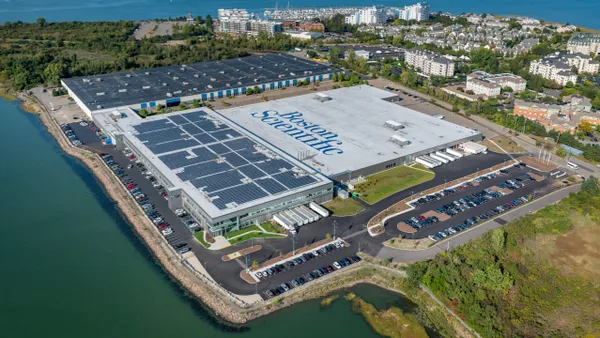Dive Brief:
-
A surgeon has performed percutaneous coronary intervention (PCI) procedures from a location 20 miles away from his patients using telerobotic technology.
-
The study, which was described in The Lancet on Tuesday, details the successful use of Corindus Vascular Robotics’ CorPath GRX Robotic System in remote coronary interventions.
-
News of the study comes weeks after Siemens Healthineers struck a $1.1 billion deal to buy Corindus for its robotic surgical technologies.
Dive Insight:
The use of robotic technologies in PCI procedures is now well established. Surgeons who use CorPath stand several feet from the patient at a workstation connected to robotic arms via cables. There is no direct physical connection between the surgeon and patient.
However, according to the authors of the Lancet paper, there have been no reports of surgeons using the technology to perform procedures from remote locations. Such long-distance surgical procedures could extend access to high-quality interventions in remote areas.
"The benefits of telerobotics are compelling," Corindus CEO Mark Toland told investors last month. Remote capabilities have the potential to address physician shortages, eliminate geographical challenges, beat time to treat, reduce the need for patient travel and extend the physicians reach, all while having the potential to improve procedural accuracy."
To test the feasibility of the concept, a surgeon in India enrolled five patients with single, type A coronary artery lesions for a study. The surgeon was at a site approximately 20 miles from the Apex Heart Institute where the subjects were treated, although another doctor stayed with the patients.
The procedure was successful in all five patients and no major adverse cardiac events were reported prior to discharge, resulting in the study hitting its primary endpoint. No evidence of arrhythmia or significant ischemia was detected following the procedure.
Those outcomes were made possible by the responsiveness of the remote surgical system. The surgeon who performed the procedure remotely said he was satisfied or extremely satisfied with the response time, control of the device, and the ability to communicate with his colleagues on the ground.
In effect, the procedure was not substantially different from a conventional robotic PCI from the perspective of the operator. However, the performance was made possible by technologies that are only available in some locations, which limits the extent to which telerobotic procedures can extend access to remote areas.
Telerobotic procedures require a stable network connection and local cardiac catheterization facilities, assets that are less likely to be available in the sort of remote regions that stand to benefit most from the approach. Corindus is working to tackle these barriers, including by testing its system on Verizon’s 5G network.










